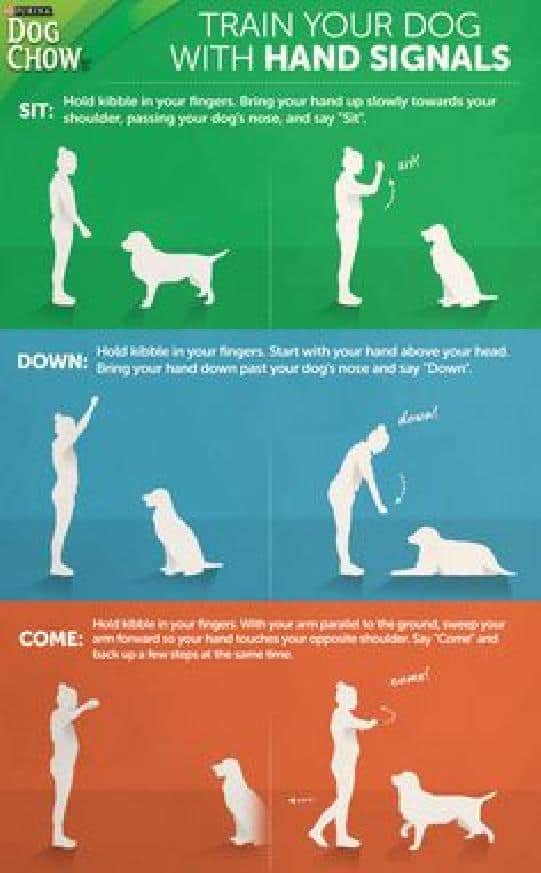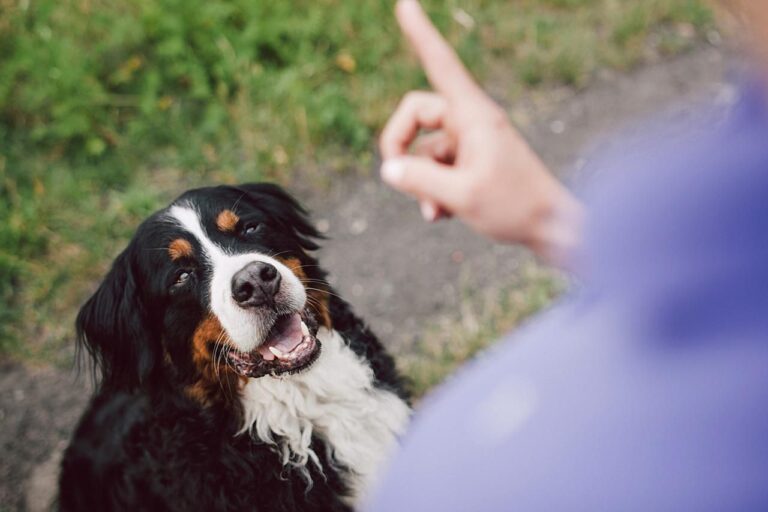To train a deaf dog, start by teaching them to focus on you through positive reinforcement, rewarding them with treats or games whenever they voluntarily look at you. Deaf dogs can learn the same skills as dogs with normal hearing, but they rely on their vision, sense of smell, and sense of touch instead of listening for cues.
Use hand signals as a form of communication, such as a thumbs-up gesture, to mark and reward desired behaviors. Deaf dogs may bark less but can develop behavior problems due to their inability to understand human communication and their sensitivity to unexpected stimuli.
With patience, consistency, and the right training methods, deaf dogs can be successfully trained.
Training A Deaf Dog
Training a deaf dog can be challenging, but it is definitely possible. Deaf dogs learn by using their vision, sense of smell, and touch, so using hand signals and positive reinforcement can be effective methods of training. With patience and consistency, deaf dogs can learn the same skills as dogs with normal hearing.
Training a deaf dog requires a unique approach. Deafness does not affect a dog’s ability to learn, but it does affect how they receive information. Instead of relying on sound cues, deaf dogs rely on visual signals, smells, and touch. In this section, we will explore three key aspects of training a deaf dog: using hand signals, teaching basic commands, and dealing with behavior problems.
When training a deaf dog, hand signals become essential communication tools. Dogs are highly visual creatures, and they quickly learn to associate specific gestures with commands. Here are some tips for effectively using hand signals:
- Keep your signals clear and consistent. Use distinct hand movements that are easy for your dog to differentiate.
- Start with simple signals for basic commands like sit, stay, and come. Gradually introduce more complex signals as your dog becomes more comfortable and responsive.
- Use positive reinforcement techniques to reward your dog when they correctly respond to a signal. Treats, praise, and affection are great rewards that motivate your dog to learn and obey.
- Practice the signals in different environments and situations to ensure your dog understands and can follow them consistently.
Training a deaf dog requires patience, consistency, and repetition. Here are some tips for teaching basic commands:
- Start with one command at a time. Focus on teaching your dog one command before moving on to the next. This allows your dog to fully understand each command before introducing new ones.
- Use visual cues along with hand signals to help your dog associate the command with the desired action. For example, when teaching the “sit” command, you can point downwards while giving the hand signal for sit.
- Break down each command into small steps and reward your dog for each successful attempt. Gradually increase the difficulty as your dog becomes proficient in each command.
- Be consistent with your training sessions. Short, frequent sessions are more effective than long, infrequent ones. Aim for 5-10 minute sessions several times a day.
Deaf dogs may exhibit behavior problems due to their unique communication challenges. Here are some tips for addressing common behavior issues:
- Use positive reinforcement techniques to encourage good behavior. Reward your dog for positive actions and ignore unwanted behaviors.
- Redirect your dog’s attention when they engage in undesirable behaviors. For example, if your dog starts to bark excessively, redirect their focus to a toy or engage them in a different activity.
- Seek professional help if the behavior problems persist. A professional dog trainer or behaviorist can provide guidance and support tailored to your deaf dog’s specific needs.
By using hand signals, teaching basic commands, and addressing behavior problems, you can successfully train your deaf dog. Remember to be patient, consistent, and understanding of your dog’s unique needs. With the right approach, your deaf dog can become a well-trained and happy companion.

Using Hand Signals
Training a deaf dog can be a unique and rewarding experience. While their inability to hear may seem like a hurdle, it actually presents an opportunity to tap into their other senses. One effective way to communicate with a deaf dog is through the use of hand signals.
Benefits Of Hand Signals
Using hand signals in training your deaf dog offers several benefits:
- Clear Communication: Hand signals provide a visual cue that is easy for your dog to understand, allowing you to communicate effectively without the need for vocal cues.
- Increased Focus: Hand signals grab your dog’s attention and help them maintain focus during training sessions.
- Non-Verbal Bonding: By relying on hand signals, you can build a stronger non-verbal bond with your dog, promoting trust and understanding.
How To Get A Deaf Dog’s Attention
Gaining your deaf dog’s attention is an essential first step in training. Here’s how:
- Visual Clues: Use visual cues such as stomping your foot or waving your hand in their peripheral vision to get their attention.
- Hand Waves: Wave your hand in front of their face to create movement that catches their attention.
- Flashlight Technique: Shine a flashlight on the ground to create a visual stimulus that captures their focus.
- Vibrating Collar: Consider using a vibrating collar that can alert your dog without the use of sound.
Disciplining A Deaf Dog
Disciplining a deaf dog requires a different approach. Here are some tips:
- Hand Signals: Use hand signals to convey commands for desired behaviors and reinforce them consistently.
- Positive Reinforcement: Reward your dog with treats or praise when they exhibit the desired behavior to reinforce good habits.
- Redirect Misbehavior: Instead of scolding or punishing, redirect your dog’s attention to a more appropriate behavior using hand signals.
Remember, training a deaf dog takes patience, consistency, and understanding. By utilizing hand signals and positive reinforcement, you can effectively train your deaf dog and build a strong bond based on clear communication.
Teaching Basic Commands
Training a deaf dog may require some adjustments in traditional training methods, but it is entirely possible to teach them basic commands effectively. By utilizing hand signals, visual cues, and positive reinforcement, you can help your deaf dog learn important obedience commands and develop a strong bond with them.
Teaching Focus
A key step in training a deaf dog is teaching them to focus on you and pay attention to your cues. Since they cannot rely on auditory cues, visual cues and hand signals become crucial. Using a strong focus command, such as “watch me,” will help redirect their attention towards you.
To teach focus to your deaf dog:
- Hold a treat in front of your face to get their attention.
- Once you have their attention, give the command “watch me” while making direct eye contact.
- Reward them with praise and the treat when they maintain eye contact with you.
Consistency is key in training a deaf dog, so be sure to practice this exercise regularly to reinforce the desired behavior.
Teaching Obedience Commands
Once your deaf dog has mastered focus, you can move on to teaching them basic obedience commands using hand signals. Here are a few commonly used obedience commands:
| Command | Hand Signal |
|---|---|
| Sit | Raise your hand with the palm facing up. |
| Down | Point your hand towards the ground. |
| Stay | Hold your hand up with the palm facing forward, like a stop sign. |
When teaching these commands, make sure to pair the hand signal with a verbal cue and reward them with treats and praise when they perform the correct action. Consistency, patience, and positive reinforcement are essential in training a deaf dog.
Training Recall
Training recall, or teaching your deaf dog to come to you when called, is crucial for their safety. Here’s how to train recall using hand signals:
- Choose a distinct hand signal, such as waving your hand side to side, to represent the recall command.
- Start in an enclosed area with minimal distractions.
- Give the hand signal and use a high-value reward to motivate your dog to come to you.
- Gradually increase the distance and practice recall in different environments.
Consistency is vital in training recall, so make sure to reward your dog every time they come to you successfully. This will reinforce the desired behavior.
Remember, training a deaf dog requires patience, consistency, and positive reinforcement. With the right techniques and understanding, you can effectively teach your deaf dog basic commands and build a strong, loving relationship.

Dealing With Behavior Problems
Deaf dogs can be trained using hand signals instead of verbal cues. Although they may have some behavior problems due to their inability to understand human communication, they can still learn and respond to training methods that utilize their other senses.
Common Behavior Problems In Deaf Dogs
Dealing with behavior problems can be challenging for any dog owner, but it can be particularly tricky when training a deaf dog. Deaf dogs may struggle with certain behavior issues due to their inability to hear verbal cues. It’s important to understand the common behavior problems that deaf dogs may exhibit, so you can address them effectively. Here are some of the behavior problems you may encounter:
- Separation Anxiety: Deaf dogs can be more prone to separation anxiety since they heavily rely on visual cues and feel more vulnerable when they can’t see their owners.
- Startle Reflex: Deaf dogs can easily get startled due to their inability to hear approaching people or other animals. This can result in fear-based behaviors, such as growling or snapping.
- Lack of Focus: Deaf dogs may struggle to concentrate, especially in distracting environments. This can make it challenging for them to learn and follow commands.
- Excessive Barking: Deaf dogs may bark excessively as a means of communication or attention-seeking behavior. Since they can’t hear themselves, it can be difficult for them to understand when they should stop barking.
Strategies For Behavior Modification
Fortunately, there are effective strategies for modifying the behavior of deaf dogs. These strategies emphasize the use of visual cues and other forms of communication that don’t rely on the sense of hearing. Here are some strategies you can implement:
- Visual Signals: Use hand signals or specific visual cues to communicate commands and cues to your deaf dog. Consistency is key when using visual signals, so make sure to establish clear and distinct gestures for each command.
- Tactile Stimulation: Incorporate touch-based cues and training methods to encourage your deaf dog to respond. For example, gently tapping on their shoulder or using light vibration cues can serve as effective prompts.
- Reward-Based Training: Positive reinforcement is essential when training deaf dogs. Use treats, praise, and other rewards to reinforce desired behaviors and encourage your dog to repeat them.
- Environmental Management: Creating a calm and structured environment can help reduce anxiety and prevent undesirable behaviors. Provide a comfortable and safe space for your deaf dog and gradually expose them to new experiences to build confidence.
Importance Of Communication And Patience
When training a deaf dog, communication and patience are essential. Understanding their unique needs and adapting your training methods accordingly is key to successful behavior modification. Remember the following:
- Be Clear and Consistent: Ensure your visual signals are clear and consistently used. Use simple and distinct gestures for each command to avoid confusion.
- Use Positive Reinforcement: Reward your deaf dog for desired behaviors to motivate and reinforce their learning. This will help them understand and associate the correct behaviors with positive outcomes.
- Be Patient and Understanding: Training a deaf dog may take more time and repetition compared to dogs with normal hearing. Stay patient, be prepared to repeat commands, and provide them with ample time to learn and adjust.
By addressing behavior problems with the appropriate strategies and focusing on clear communication and patience, you can help your deaf dog overcome obstacles and thrive in their training journey. Remember, with dedication and understanding, your deaf dog can learn and become a well-behaved and happy companion.

Frequently Asked Questions On How To Train A Deaf Dog
Are Deaf Dogs Difficult To Train?
Deaf dogs can still learn just like dogs with normal hearing. They rely on their other senses, such as sight, smell, and touch, to understand and respond to training cues. Use hand signals or visual cues to communicate with them effectively.
How Do You Discipline A Deaf Dog?
To discipline a deaf dog, you can use mark and reward training techniques. Instead of a clicker, use a hand signal, like a thumbs-up gesture, to mark the desired behavior. Deaf dogs can learn just like dogs with normal hearing, but they rely on their vision, smell, and touch.
How Do You Get A Deaf Dog’s Attention?
To get a deaf dog’s attention, use hand signals as a form of communication. Hand signals can be used as a substitute for verbal cues and can be easily seen by the dog. This allows you to communicate with your deaf dog even at a distance or in situations where verbal cues may not be effective.
What Are The Behavior Problems With Deaf Dogs?
Deaf dogs may have behavior problems due to their difficulty in understanding human communication and being easily startled or frightened. They may bark less and their voice may sound odd. However, deaf dogs can learn the same skills as dogs with normal hearing by using their vision, sense of smell, and touch.
Conclusion
Training a deaf dog requires a different approach, but they are just as capable of learning as dogs with normal hearing. Instead of relying on verbal cues, deaf dogs rely on their vision, smell, and touch to understand commands. By using hand signals and positive reinforcement techniques, you can effectively train your deaf dog.
Remember to be patient, consistent, and understanding of their unique needs. With the right training methods, your deaf dog can become a well-behaved and happy companion.

